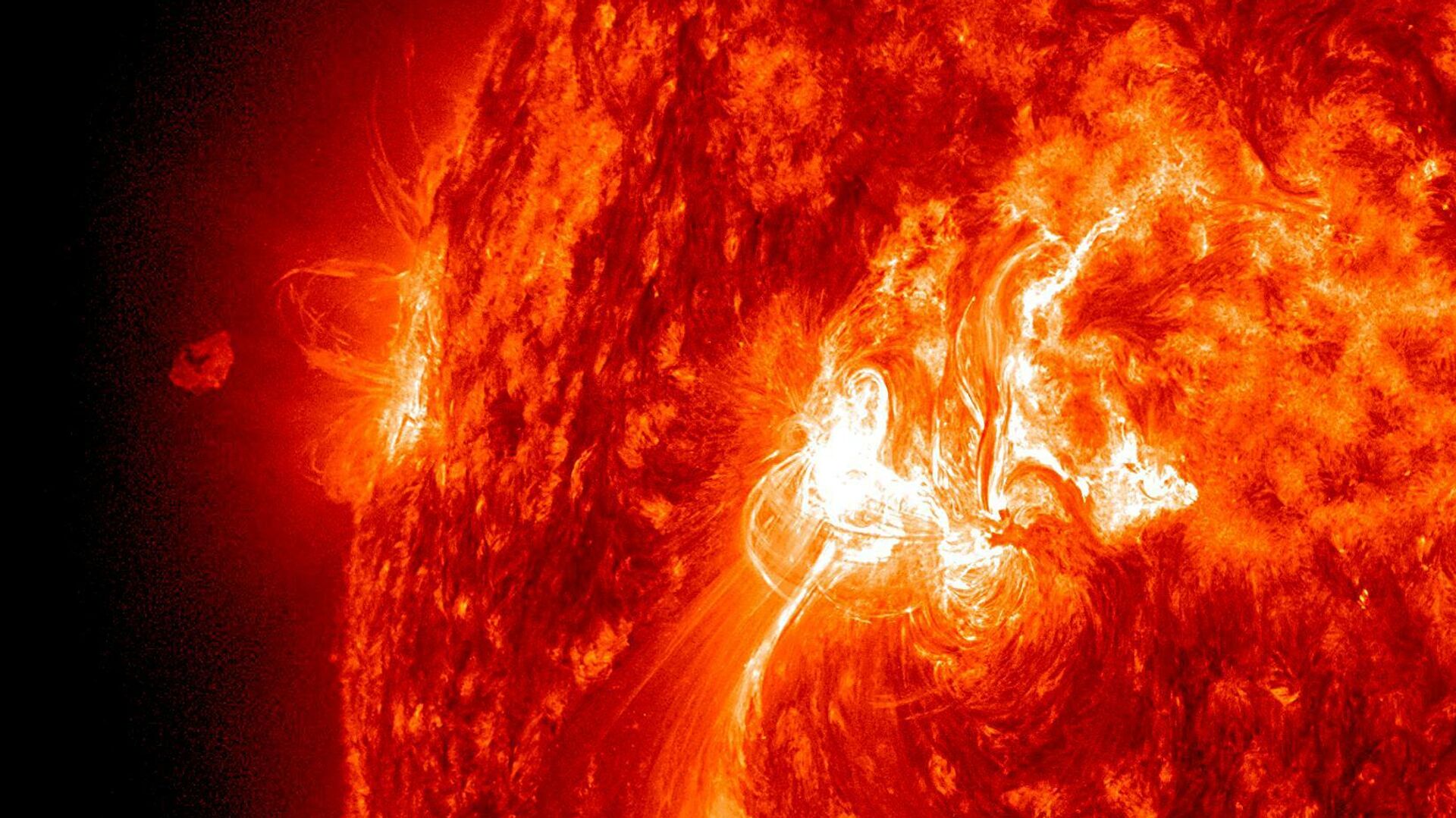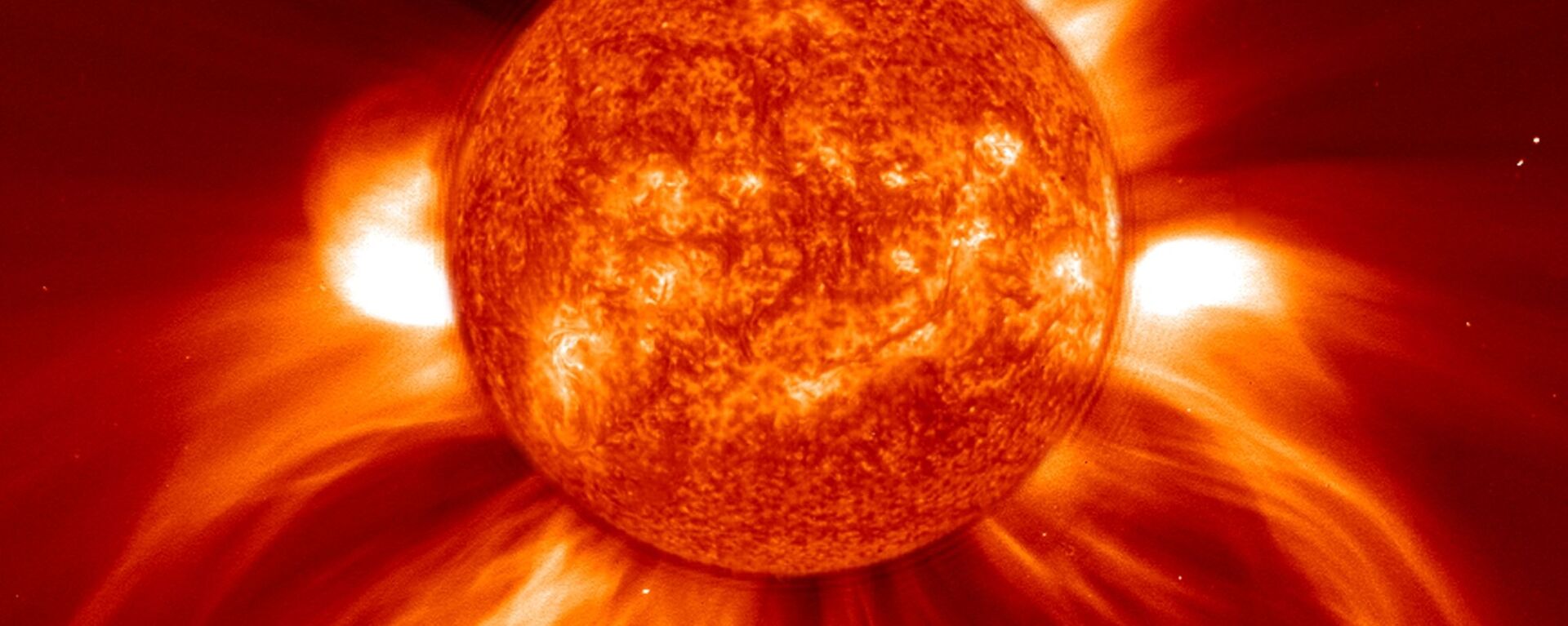https://sputnikglobe.com/20220129/unpredictable-powerful-solar-storm-hit-earth-9200-years-ago-during-period-of-low-solar-activity-1092597175.html
Unpredictable? Powerful Solar Storm Hit Earth 9200 Years Ago During Period Of Low Solar Activity
Unpredictable? Powerful Solar Storm Hit Earth 9200 Years Ago During Period Of Low Solar Activity
Sputnik International
Unpredictable? Powerful Solar Storm Hit Earth 9200 Years Ago During Period Of Low Solar Activity
2022-01-29T02:01+0000
2022-01-29T02:01+0000
2022-01-29T02:01+0000
science & tech
sun
solar storm
magnetic fields
https://cdn1.img.sputnikglobe.com/img/07e6/01/1d/1092597281_0:26:1650:954_1920x0_80_0_0_be1929e6807dbd6addc19a276253d7ef.jpg
An extremely powerful solar storm hit the Earth 9,400 years ago, scarring the ice buried deep beneath Greenland and Antarctica, which was examined by a team of researchers from Germany and Switzerland.According to a study published in Nature Communications, this previously unknown storm is one of the strongest that scientists have ever detected. They say that if it hit Earth today, it would disable all communications systems.Meanwhile, periods of calm and active Sun phases alternate approximately every 11 years (also known as the solar magnetic activity cycle) with the transition period taking approximately 5 years.The study stresses that the ancient solar storm took place at a point in the cycle when solar outbursts are much less common. According to the researchers, the unexpected discovery shows that destructive solar storms could hit Earth when humanity least expects them.The solar storm was discovered while scientists were searching for radioactive isotopes of beryllium-10 and chlorine-36 in ice cores. They are "produced" by high-energy cosmic particles that reach the Earth during solar storms and can be stored in ice for thousands of years.Mild solar storms can affect satellites and radio transmissions, while severe ones, such as the Halloween Solar Storms that occurred in 2003, could shut down cities and regions and take out electrical grids. Some researchers have said that a powerful storm could also destroy underwater internet cables, causing an “internet apocalypse” that would leave whole areas of the world without communication for a long period of time.
https://sputnikglobe.com/20210729/solar-winds-cause-crack-in-earths-magnetic-field-as-speeds-reach-400-km-per-second-report-says-1083485070.html
Sputnik International
feedback@sputniknews.com
+74956456601
MIA „Rossiya Segodnya“
2022
News
en_EN
Sputnik International
feedback@sputniknews.com
+74956456601
MIA „Rossiya Segodnya“
Sputnik International
feedback@sputniknews.com
+74956456601
MIA „Rossiya Segodnya“
science & tech, sun, solar storm, magnetic fields
science & tech, sun, solar storm, magnetic fields
Unpredictable? Powerful Solar Storm Hit Earth 9200 Years Ago During Period Of Low Solar Activity
Solar storms occur when the magnetic field lines in the outer part of the Sun's atmosphere become entangled and then snap back into place. The sudden magnetic reconnection emits huge amounts of plasma and magnetic field. If a powerful ejection passes over the Earth, it is able to compress the planet's magnetic shield, causing a solar storm.
An extremely powerful solar storm hit the Earth 9,400 years ago, scarring the ice buried deep beneath Greenland and Antarctica, which was examined by a team of researchers from Germany and Switzerland.
According to a study published in Nature Communications, this previously unknown storm is one of the strongest that scientists have ever detected. They say that if it hit Earth today, it would disable all communications systems.
Meanwhile, periods of calm and active Sun phases alternate approximately every 11 years (also known as the solar magnetic activity cycle) with the transition period taking approximately 5 years.
The study stresses that the ancient solar storm took place at a point in the cycle when solar outbursts are much less common. According to the researchers, the unexpected discovery shows that destructive solar storms could hit Earth when humanity least expects them.
"These enormous storms are currently not sufficiently included in risk assessments," study co-author Raimund Muscheler, a geology researcher at Lund University in Sweden, said in a statement. "It is of the utmost importance to analyze what these events could mean for today's technology and how we can protect ourselves."
The solar storm was discovered while scientists were searching for radioactive isotopes of beryllium-10 and chlorine-36 in ice cores. They are "produced" by
high-energy cosmic particles that reach the Earth during solar storms and can be stored in ice for thousands of years.
"This [storm] further pushes the magnitude of a potential worst-case scenario for [solar storm] events," the researchers wrote in the study.
Mild solar storms can affect satellites and radio transmissions, while severe ones, such as the Halloween Solar Storms that occurred in 2003, could shut down cities and regions and take out electrical grids. Some researchers have said that a powerful storm could also destroy underwater internet cables, causing an “internet apocalypse” that would leave whole areas of the world without communication for a long period of time.


